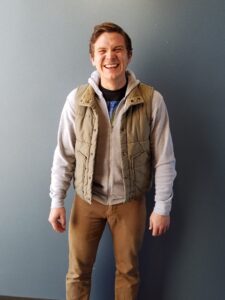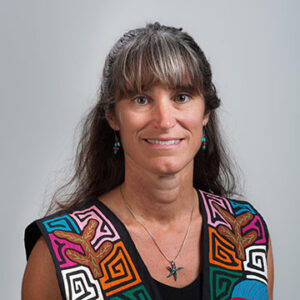
About the Blog Author: Jacob Green (he/him) is a PhD student in the Puritz Lab of Marine Evolutionary Ecology at the University of Rhode Island. His undergrad degree in Molecular Biology is from California State University Monterey Bay (CSUMB) where he was Sally Casanova and UROC Scholar in the Logan Lab and applied transcriptomics to explore ocean acidification and hypoxia effects in rockfish. At URI, Jacob is the Graduate Program Coordinator for the Maximizing Access to Research Careers (MARC) Undergraduate Student Training in Academic Research (U-STAR) program which is a research and professional development program supported by the NIH / NIGMS for undergraduate students from underrepresented backgrounds. In the lab Jacob is developing expressed exome capture sequencing (EecSeq) as a reduced representation sequencing tool to survey the genome for loci under selection and applying seascape genomics to exploring infectious diseases of marine invertebrates. You can find contact Jacob through his Github or on twitter @MadMolecularMan.
A great plenary talk sets the tone of a conference. At AGA 2021 Dr. Lissette Waits, Distinguished Professor of Wildlife Resources and Department Head of Fish and Wildlife Services at the University of Idaho, not only delivered but directly gave us a “A Call to Action”. As conservation biologists we must ask ourselves; how can we accomplish the goals of conservation to evaluate the human impacts on biological diversity and develop practical approaches to prevent the extinction of species (Soulé 1986, Wilson 1992). Dr. Waits argues through four distinct movements 1) Do actionable science 2) Work directly with policy managers and policy makers 3) Train next generation scientists 4) Communicate value to specific audiences. Now you might be thinking “I do all of this!”, but the next question to ask yourself is “can you be better?”. Yes, we can be better, and we must do better to meet the challenges of the coming decades.

The one area I believe we must focus on and develop is involving local, state, and federal policy managers, makers, and doers in our science. Dr. Lisette Waits spoke on this at length, reiterating that this is not a conversation that happens after you do your research when you want to make recommendations, but is centered from the very beginning when formulating your grants, projects, and recommendations. When we envision our roles as scientific experts would we rather be the outsider who comes in to propose tone deaf solutions and apply unneeded tools or be the respected and involved advisor that deftly crafts their ideas and research to meet the needs of their community? This work is not easy and can be emotionally taxing. Listening to Dr. Lisette Waits describes the policy and communication breakdowns involved in the conservation projects for our dwindling Red Wolf populations it is apparent that even when we accomplish this level of involvement, it can fail (Murray, et al. 2015). But that does not mean we quit. We continue to push forward.

The largest strides towards this “Call to Action” are made in ourselves and our lab culture, those spheres we can directly control. The National Science Foundation established a framework to integrate Broader Impacts into our funded projects. While intellectual merit is important, we cannot overlook and undersell the damage we do when we fail to accomplish our Broader Impacts. But what does this look like in the modern era? Labs must establish a good mentoring policy, that is devoid of implicit bias, to best develop the next generation of scientists. Gone are the days where you can omit diversity statements, ignore mentor-mentee charters/IDPs, and leave inclusive pedagogy lab and classroom policy to the science education researchers (Tuitt, et al. 2016). These are fundamental aspects of taking your lab culture into the 20th century, of bridging the gap between underserved and underrepresented mentees who don’t by the process of osmosis learn your mentoring style, of partaking in cooperative creation of lab norms and policies with your group and being scholars of the research and classroom space (Reynolds 1997). Without taking stock of within your research space, your impact outside is diminished. Centering these Broader Impacts and making them a priority is crucial to meeting this “Call to Action”.
References
Wilson, Edward O. The Diversity of Life. Belknap Press of Harvard University Press, 1992. Print.



